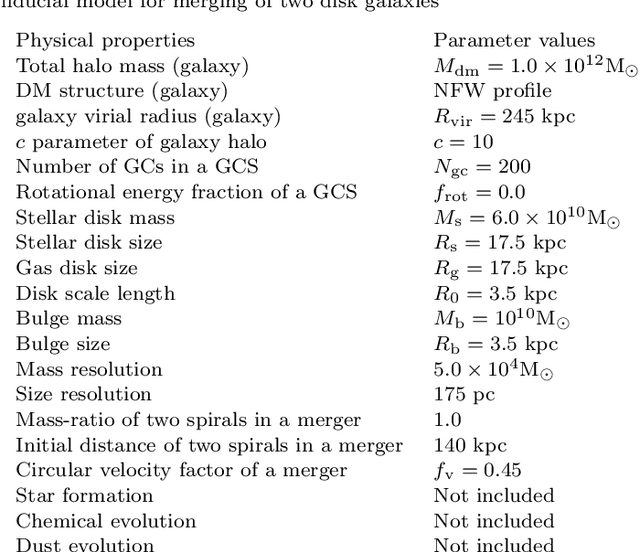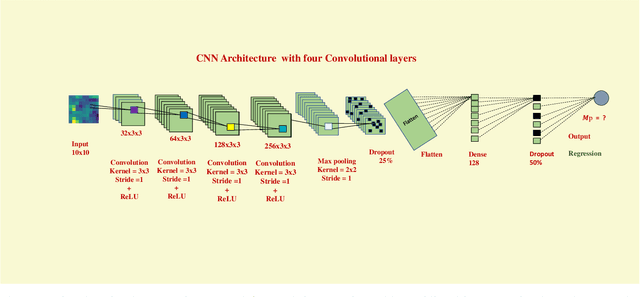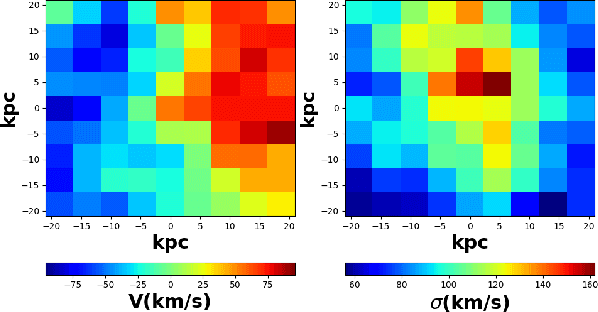Estimating galaxy masses from kinematics of globular cluster systems: a new method based on deep learning
Paper and Code
Feb 03, 2021



We present a new method by which the total masses of galaxies including dark matter can be estimated from the kinematics of their globular cluster systems (GCSs). In the proposed method, we apply the convolutional neural networks (CNNs) to the two-dimensional (2D) maps of line-of-sight-velocities ($V$) and velocity dispersions ($\sigma$) of GCSs predicted from numerical simulations of disk and elliptical galaxies. In this method, we first train the CNN using either only a larger number ($\sim 200,000$) of the synthesized 2D maps of $\sigma$ ("one-channel") or those of both $\sigma$ and $V$ ("two-channel"). Then we use the CNN to predict the total masses of galaxies (i.e., test the CNN) for the totally unknown dataset that is not used in training the CNN. The principal results show that overall accuracy for one-channel and two-channel data is 97.6\% and 97.8\% respectively, which suggests that the new method is promising. The mean absolute errors (MAEs) for one-channel and two-channel data are 0.288 and 0.275 respectively, and the value of root mean square errors (RMSEs) are 0.539 and 0.51 for one-channel and two-channel respectively. These smaller MAEs and RMSEs for two-channel data (i.e., better performance) suggest that the new method can properly consider the global rotation of GCSs in the mass estimation. We stress that the prediction accuracy in the new mass estimation method not only depends on the architectures of CNNs but also can be affected by the introduction of noise in the synthesized images.
 Add to Chrome
Add to Chrome Add to Firefox
Add to Firefox Add to Edge
Add to Edge